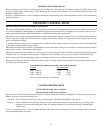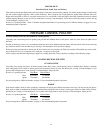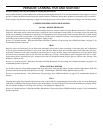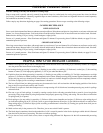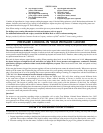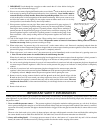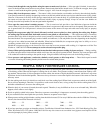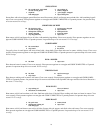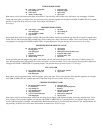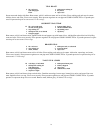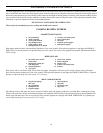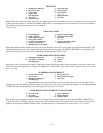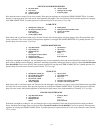
23
3. Always look through the vent pipe before using the canner to make sure it is clear. — If the vent pipe is blocked, it cannot func-
tion as it should and thus cannot relieve excess pressure. Pressure may then build to unsafe levels. To clean the vent pipe, draw a pipe
cleaner or small brush through the opening, as shown on page 4. Also clean the vent pipe nut as shown.
4. Always fully close the pressure canner. — The canner is fully closed when the cover handles are directly above the body handles.
Your pressure canner has specially designed lugs on the cover and body which lock the cover in place when the canner is fully closed.
However, if the canner is not fully closed, the lugs cannot lock the cover onto the body. It’s possible that pressure could build inside
the canner and cause the cover to come off and result in bodily injury or property damage. Always be sure the cover handles are
directly above the body handles. Do not turn past handle alignment.
5. Never open the canner when it contains pressure. — The air vent/cover lock provides a visual indication of pressure inside the
canner. When it is up, there is pressure. When it is down, there is no pressure in the canner and it can be opened. If the pressure can-
ner is opened before all of the pressure is released, the contents of the canner will erupt and could cause bodily injury or property
damage.
6. Replace the overpressure plug if it is hard, deformed, cracked, worn or pitted, or when replacing the sealing ring. Replace
the sealing ring if it becomes hard, deformed, cracked, worn, pitted, or soft and sticky. — The overpressure plug is a secondary
pressure relief valve which is designed to relieve excess pressure by releasing from the canner cover in the event that the vent pipe
becomes blocked. The overpressure plug is made of rubber, and when new, is soft and pliable. Over time, depending on the frequency
and type of use, rubber becomes hard and inflexible. When hard and inflexible, the overpressure plug loses its ability to act as a
secondary pressure relief valve. It should be replaced immediately.
Should the overpressure plug ever be forced out of the cover due to excess pressure while cooking, it is important to call the Test
Kitchen at 1-800-368-2194. Do not attempt to use the released overpressure plug.
7. Always follow special procedures found in the instruction book when pressure cooking dry beans and peas. — During cooking,
dry beans and peas tend to froth and foam which could cause the vent pipe to become blocked. Therefore, dry beans and peas need
to be soaked and cooked according to the specific recipe. Using this method will keep foam at safe levels during cooking.
8. Never pressure cook applesauce, cranberries, rhubarb, cereals, pastas, or dried soup mixes. — These foods expand so much
as a result of foaming and frothing that they should never be cooked under pressure.
HelPful HinTs foR PRessuRe CooKinG
Your favorite recipes may be adjusted for cooking in the canner by following the general directions in this book for the particular type
of food being cooked. Decrease the length of cooking time by two thirds, since pressure cooking is much faster than ordinary cook-
ing methods. Because there is little evaporation from the canner, the amount of liquid should be decreased. Add about 2 cups more
liquid than desired in the finished product. There must always be water or some other liquid in the bottom of the canner to form the
necessary steam.
Use the cooking rack when it is desirable to cook foods out of the cooking liquid. When foods are pressure cooked out of the liquid,
flavors will not intermingle. Therefore, it is possible to cook several foods at once, as long as they have similar cooking times. If it is
desirable to blend flavors, do not use the cooking rack.
When the body of your canner is heated, the metal expands. Therefore, it may be difficult to close cover on heated body. When this
happens, allow canner to cool slightly.
Foods are quickly cooked in the canner. Therefore, to prevent overcooking it is important to accurately time the cooking period.
If your cooked food has more liquid than you desire, simmer to evaporate excess liquid.
When pressure cooking at high altitudes, cooking time should be increased 5% for every 1000 feet above the first 2000 feet. Following
this rule, the time would be increased as follows:
3000....... 5% 5000 ......15% 7000 .......25%
4000 ..... 10% 6000 . . . . . . 20% 8000 .......30%
If you have questions on recipes or timetables write to: Test Kitchen, National Presto Industries, Inc., 3925 North Hastings Way, Eau
Claire, Wisconsin 54703-3703, phone 1-800-368-2194. You may also contact us at our website www.gopresto.com. Inquiries will be
answered promptly by letter, phone, or email.



